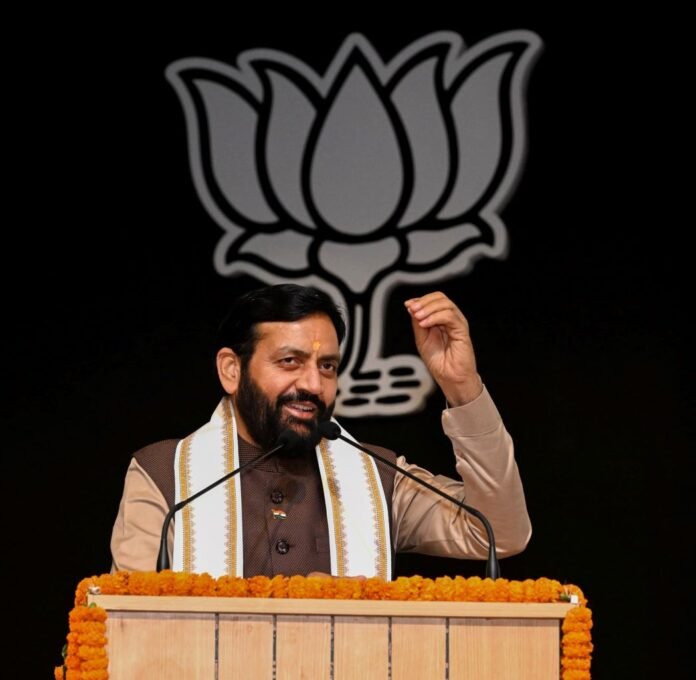In a landmark decision aimed at addressing water scarcity and enhancing agricultural infrastructure in Haryana, Chief Minister Nayab Singh Saini has granted administrative approval for the reconstruction of the Badhwana Distributary in Charkhi Dadri district. With an investment of ₹41.30 crore, this ambitious project marks a significant commitment by the state government toward rural revitalization, particularly in regions reliant on canal irrigation for their livelihoods.
The Badhwana Distributary, an essential component of the larger Loharu Canal system, plays a pivotal role in supplying irrigation and potable water to a cluster of agrarian villages in south-western Haryana. Originally constructed in 1971–72 with a design discharge capacity of 176 cusecs, the distributary currently falls short in meeting the escalating irrigation and drinking water demands of the area. To address this, the capacity of the canal will be expanded to 235 cusecs under the new reconstruction plan, effectively preparing the region for future agricultural and water consumption needs.
The revamped distributary, scheduled for completion by December 31, 2026, will serve as a lifeline to over two dozen villages, including Imlota, Kanheti, Morwala, Sarupgarh, Bhaghvi, Samsapur, Dhani Phogat, Tikkan Kalan, Ghasola, Kaliyan, Mandola, Kalali, Balali, and Dudhwa. The enhanced canal infrastructure is expected to ensure consistent irrigation supply to the region’s sandy terrains, which often struggle with water retention and agricultural viability.
Notably, the project is designed not only to improve irrigation but also to enhance potable water availability. The distributary is directly connected to 14 major waterworks tanks that supply drinking water to several habitations, such as Kanheti, Sarupgarh, Bahgvi, Kaliavas, Sehlanga, Samsapur, Dhani Phogat, Gothra, Mori, Kapoori, Kheri Sanwal, Ghasola, Kaliyana, and Kalali. These tanks are integral in ensuring clean water access in a region where groundwater levels have been steadily declining due to over-extraction and inadequate recharge systems.
The Badhwana Distributary also sustains a complex network of off-take channels and minors that irrigate diverse farmlands. These include, among others, the Kheri Bhura Minor serving Kaliana, Bharvi, Kheri Bhura, Ghasola, and Dadri; Dabri Sub-Minor covering Dadri and Bharvi; Gothra Minor benefiting Mandola, Mandoli, Balkra, Mori, and Gothra; and Makarana Sub-Minor aiding Balkra and Makarana. In total, more than 40 villages are set to directly or indirectly benefit from this overhaul, demonstrating the extensive reach of the distributary.
Crucially, the revised design incorporates environmental considerations as well. The project will connect 14 village ponds to the main canal system to help recharge groundwater and provide adequate water supply for livestock and local biodiversity. Villages such as Bhaghvi, Samsapur, Dhani Phogat, Tikkan Kalan, Kaliyali, Kaliyana, Adampur Dadhi, and Balali will see immediate ecological and agricultural benefits from this integration. This aspect is especially relevant in the context of climate change and monsoon unpredictability, as it reflects a model of water management that prioritizes conservation alongside consumption.
The strategic importance of this canal for the Charkhi Dadri and Badhra Assembly constituencies cannot be overstated. These areas, primarily dependent on rainfed agriculture, often face challenges during dry spells, with limited access to surface water and diminishing groundwater levels. By increasing the canal’s discharge and modernizing its structure, the government aims to mitigate these vulnerabilities and ensure that farmers can cultivate multiple crops with confidence throughout the year.
Beyond agricultural implications, the project is poised to stimulate economic development in the region. Improved irrigation will likely enhance crop yields, enabling diversification into high-value horticulture and other allied farming practices. This in turn could lead to better incomes for farmers, lower rural distress, and reduced migration pressures. Moreover, the assurance of drinking water to villages will uplift public health indicators, particularly for women and children who bear the brunt of water collection and waterborne diseases.
The approval of this project is in line with Chief Minister Nayab Singh Saini’s broader vision of infrastructure-led rural development and climate-resilient governance. His administration has consistently emphasized strengthening irrigation networks, expanding drinking water access, and implementing environmentally sustainable policies to secure Haryana’s future against rising ecological and agrarian risks.
This investment in the Badhwana Distributary is thus more than just a public works project—it is a long-term strategic intervention with transformative potential for Haryana’s water security and rural prosperity. As the state prepares to execute this critical initiative over the next 18 months, all eyes will be on the implementation process and the tangible outcomes it delivers for thousands of farmers and rural households.
#HaryanaIrrigation #BadhwanaDistributary #WaterInfrastructure #CMNayabSinghSaini #CharkhiDadri #AgricultureDevelopment #DrinkingWaterHaryana #RuralRevival #SustainableFarming #WaterSecurity
This is a web generated news report.




